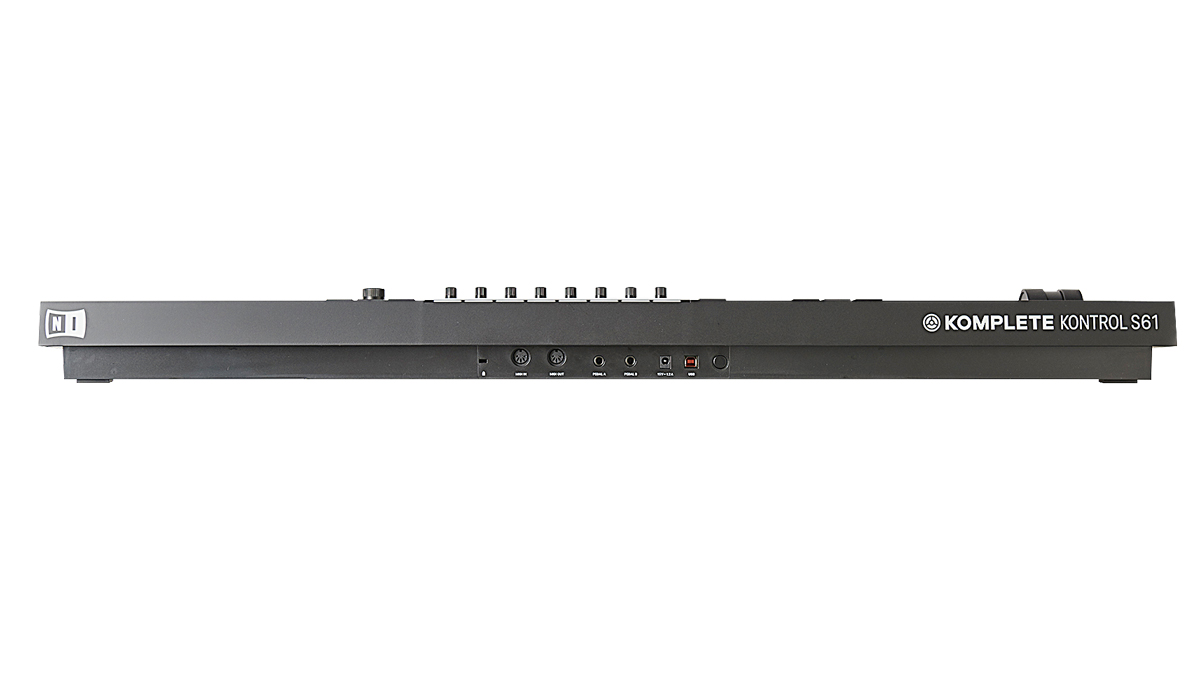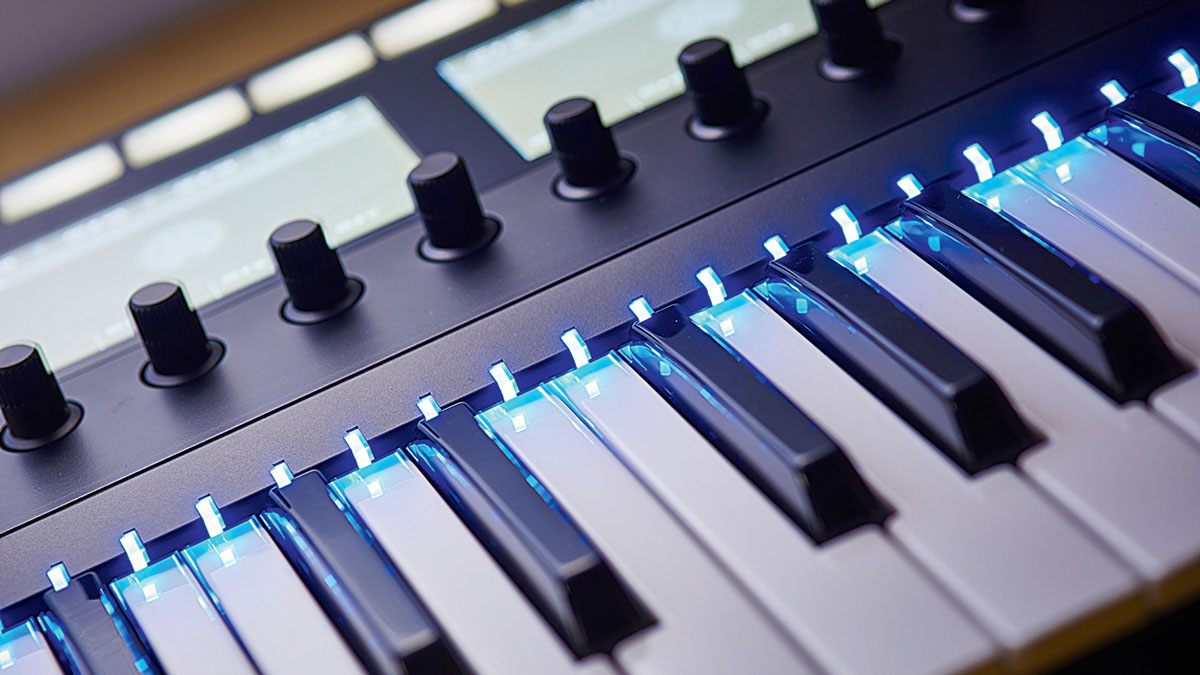MusicRadar Verdict
Komplete Kontrol MkII brings a whole sonic universe under your fingertips like never before, with much deeper DAW integration too.
Pros
- +
Improved workflow.
- +
Maschine integration.
Cons
- -
No sliders.
MusicRadar's got your back
Very few companies oversee a software product collection as diverse and comprehensive as Native Instruments.
Over the years, its libraries and instrument collections have expanded to cover so many musical genres that musicians, producers and composers of all styles and descriptions have been seduced.
Whilst NI has, through the years, also designed hardware to harness the power of some of its software titles, until Komplete Kontrol’s release in 2014, never had such an integrated solution been released. Now, Komplete Kontrol returns with a considerable list of enhancements, all driven by a focus on even deeper integration into your creative workflow.
Anyone familiar with the original Komplete Kontrol hardware will see immediate changes on MkII. The most arresting of these is the addition of a pair of high-res colour screens whose functions switch to reflect your choice of operation.
In the bottom left-hand corner, the previous incarnation’s pitchbend and modulation sliders have been replaced by more traditional (and more controllable) wheels, whilst beneath these, a ribbon-style slider is adorned with a discreet row of lights to show current position.
The whole of the upper surface is redesigned too, with a broader collection of buttons and rotaries which hint heavily at the extended functionality NI hopes to provide through Komplete Kontrol; not just of supported software libraries, but over your host DAW too.
Round the back you’ll find connections as follows; a USB 2.0 port which provides bus power as well as communication with your computer, a twin pair of MIDI ports, and two pedal controller sockets. Whilst it hasn’t been updated since the original version of Komplete Kontrol, it’s still worth drawing attention to the aftertouch-enabled Fatar keyboard, which is pleasingly musical to play.
One last hardware consideration: at present, only the two ‘middle-sized’ keyboards from the Komplete Kontrol range have been updated. We’re yet to see what NI has planned for the baby of the range - the S25 - and the flagship S88.

To use your Komplete Kontrol keyboard, you’ll need to register it via the Native Access portal, which enables an optional download of a software bundle called ‘Komplete 11 Select’.
Thereafter, Komplete Kontrol has been designed foremost for driving the initial, creative stages of building a track, and many of its new functions have this in mind. None more so than the Browser, which allows you - as in the Komplete Kontrol software - to narrow a sound search via keywords.
But now, once a shortlist of sonic candidates is presented, audio clips are triggered as you scroll through the options, without having to load an entire patch for it to be auditioned. Brilliantly, this is part of NKS (Native Kontrol Standard) content too, so not only can you audition sounds from NI’s own instruments, third-party content from Arturia, Spitfire Audio, Output and many others will also appear. This means that you no longer have to think ‘by manufacturer’ when you’re looking for sounds to suit your track.
With a purchase of one of the new Komplete Kontrol keyboards, you’ll receive a download link to Komplete 11 Select, containing Massive, Monark, The Gentleman, DrumLab, Reaktor Prism, Scarbee Mark 1, Retro Machines, Vintage Organs, the West Africa percussion library, Solid Bus Comp and Replika. Whilst it’s highly likely that you’ll be most interested in the Komplete Kontrol hardware if you’re already a Komplete 11 user, this comprehensive bundle is a great starting point if you’re not, with upgrade paths available to those who want to step up at a later date.
NI titles and NKS-ready content easier to access and audition.
DAW integration has been tightened too, with Komplete Kontrol now much more ready and willing to talk to Ableton Live, Logic Pro X, GarageBand, Cubase and Nuendo. Alongside the transport controls you’ll find on the left-hand side, the four-way push encoder comes into its own here. Here you can move between tracks, record enable the template of sounds you have up and running, or move the Transport playback bar by scrolling.
Once you’ve used Browser mode to target a sound you like, Plug-In Mode (with its corresponding button) lets you go further, providing access to key parameters. If you want to record those parameter changes into your DAW, hit the Auto(mation) button on the front panel and you can tweak on the fly. Very neat and tidy.
But things get better still. The Mixer button will display your DAW’s Mixer screen, with the surrounding controls then able to grab hold of parameters like Volume and Pan.

Integration with third-party DAWs is one thing, but as so much of the new functionality here is lifted from Maschine (MkIII of its hardware controller is out now too), it’s no surprise that deeper integration with Maschine is offered via Komplete Kontrol as well.
If you’re working with the Maschine software, you’ll find driving this much more straightforward in terms of an arrangement, whilst the buttons above the display make jumping from one section of your Maschine arrangement easier still.
If you liked the idea of Komplete Kontrol the first time around, the good news is that there’s even more to like about it now. You can do so much more from the device itself, with better visual feedback and much deeper levels of integration front and centre of its workflow.
In particular, having Browser access to NKS-ready content is a great addition, whilst being able to quantize and add automation direct from the front panel (among other DAW-specific controls like Tap Tempo) really lets you make music on the fly. If you’re already wedded to a Komplete software package, nothing will help you work with it as musically as Komplete Kontrol.
- Our pick of the best MIDI keyboards overall
“KIKI BOY 2025”: Frank Ocean appears to be teasing something... or other
“This is great. I knew I was getting to them! I’m so happy. It’s such a good feeling”: Spotify bites back at Kate Nash
“The included sample content is not only unique but sonically amazing, as it always was”: Spitfire Audio BBC Radiophonic Workshop review










